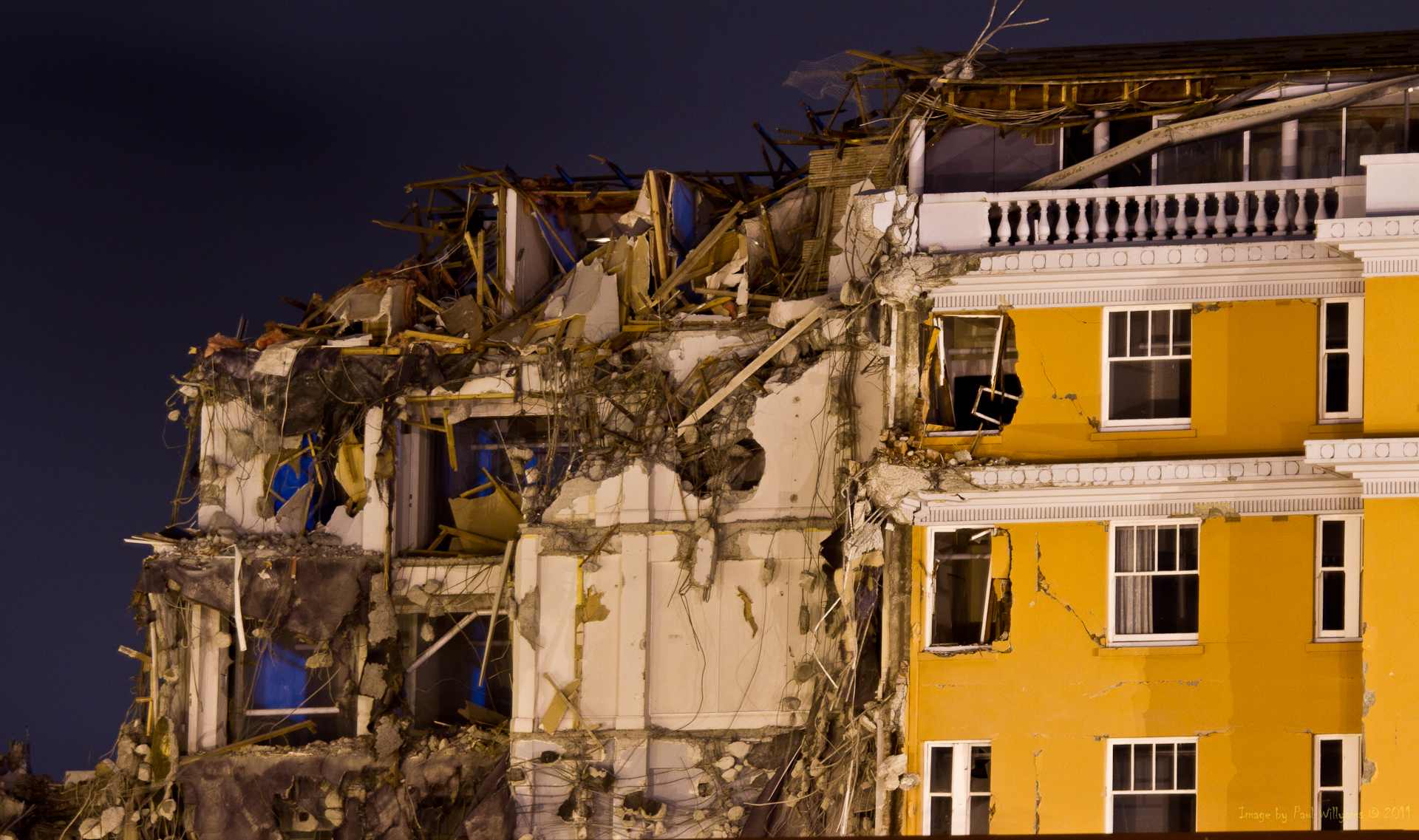St Elmo Courts on:
[Wikipedia]
[Google]
[Amazon]
St Elmo Courts was a residential high rise building constructed in 1930 in the

 St Elmo Court had a light reinforced concrete frame that was infilled with masonry. Following the 4 September 2010 earthquake, diagonal shear cracks were visible in the façade in the vertical piers. One column had a shear failure. The damage became more extensive in the 22 February 2011 earthquake.
St Elmo Court had a light reinforced concrete frame that was infilled with masonry. Following the 4 September 2010 earthquake, diagonal shear cracks were visible in the façade in the vertical piers. One column had a shear failure. The damage became more extensive in the 22 February 2011 earthquake.
city centre
A city centre is the commercial, cultural and often the historical, political, and geographic heart of a city. The term "city centre" is primarily used in British English, and closely equivalent terms exist in other languages, such as "" in Fren ...
of Christchurch
Christchurch ( ; mi, Ōtautahi) is the largest city in the South Island of New Zealand and the seat of the Canterbury Region. Christchurch lies on the South Island's east coast, just north of Banks Peninsula on Pegasus Bay. The Avon River / ...
, New Zealand. Used mainly as an office building in later years, it had a Category II heritage listing by the New Zealand Historic Places Trust
Heritage New Zealand Pouhere Taonga (initially the National Historic Places Trust and then, from 1963 to 2014, the New Zealand Historic Places Trust) ( mi, Pouhere Taonga) is a Crown entity with a membership of around 20,000 people that advocate ...
. It was demolished in March 2011, having suffered significant damage in the 2010 Canterbury earthquake
The 2010 Canterbury earthquake (also known as the Darfield earthquake) struck the South Island of New Zealand with a moment magnitude of 7.1 at on , and had a maximum perceived intensity of X (''Extreme'') on the Mercalli intensity scale. Som ...
and more damage in the subsequent February 2011 Christchurch earthquake
A major earthquake occurred in Christchurch on Tuesday 22 February 2011 at 12:51 p.m. local time (23:51 UTC, 21 February). The () earthquake struck the entire of the Canterbury region in the South Island, centred south-east ...
.
History
The site of the building, on the corner of Hereford and Montreal Streets, was occupied by the St Elmo Boarding House. It was advertised as "superior private accommodation". A replacement building, St Elmo Courts, was designed in 1929 by B. J. Ager. This reflected a movement in the larger New Zealand cities in the 1920s and 1930s for apartment living. The appeals were inexpensive living in a central location, with apartments offering modern conveniences and built in furniture. St Elmo Courts was constructed in 1930. Accordingly, St Elmo Court provided bedsits and two-bedroom apartments. Many of those were later converted to office space. After the 2010 Canterbury earthquake, the building was yellow stickered (meaning restricted access only). The building's owner and his insurance company agreed that it was too damaged after the 22 February 2011 earthquake for it to be saved. Demolition began on 20 March 2011.Structural design and failure mechanism

 St Elmo Court had a light reinforced concrete frame that was infilled with masonry. Following the 4 September 2010 earthquake, diagonal shear cracks were visible in the façade in the vertical piers. One column had a shear failure. The damage became more extensive in the 22 February 2011 earthquake.
St Elmo Court had a light reinforced concrete frame that was infilled with masonry. Following the 4 September 2010 earthquake, diagonal shear cracks were visible in the façade in the vertical piers. One column had a shear failure. The damage became more extensive in the 22 February 2011 earthquake.
Rebuild
A modern, 5-storey replacement has been constructed on the Hereford Street site. The new building is to 180% of the new building code, and features base isolators. Law firm Wynn Williams has taken naming rights and the building is now called Wynn Williams House.Heritage listing
On 26 November 1981, the building was registered by the New Zealand Historic Places Trust as a Category II historic place, with the registration number being 3133.References
{{Reflist Residential buildings completed in 1930 NZHPT Category II listings in Canterbury, New Zealand Buildings and structures in Christchurch Buildings and structures demolished as a result of the 2011 Christchurch earthquake 1930s architecture in New Zealand